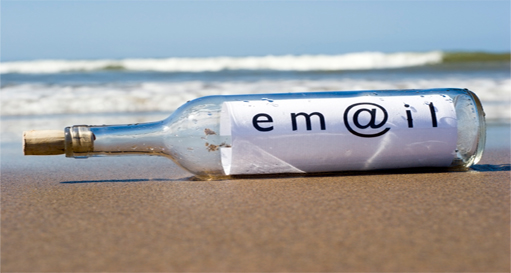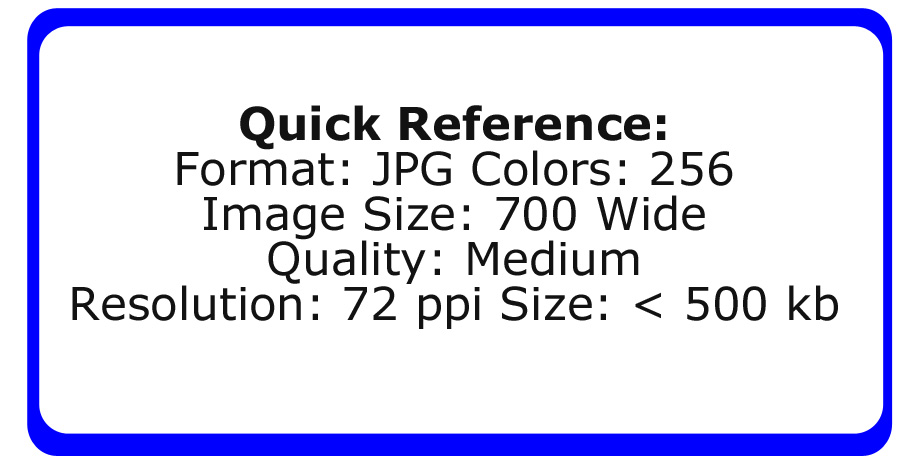How to Use Direct Mail Creative for your Email Campaign
A Designers Guide to Email to HTML Email
This article is a designer’s guide, giving you specific instructions on converting your direct mail artwork into an e-mail marketing message, without having to know any programming or HTML. If you haven’t already, I recommend also reading our article: Creating E-mails – For Direct Mail Junkies! While this document is meant more as a technical reference for your designer, that one gets into the nitty gritty of how to get your e-mail read.
Let me start by explaining the three types of e-mail messages that people send. First, there is text e-mail. A message sent in text can be read by any e-mail client and uses a basic font and font size. While this may be fine for a business correspondence, it really doesn’t do a good job of highlighting your message. Also, as an advertisement, its appearance is not particularly professional. In direct mail terms, that is like sending out a black and white pamphlet on copy paper, vs. a full color self-mailer on 100# gloss book.
Alternatively, there is HTML e-mails. HTML allows for bold design as well as customizations inside the marketing message itself. The main problem with HTML is the complexity in creating a document withit. Someone with HTML knowledge will be needed to code the design and then the e-mail message will have to be tested using the main e-mail clients (AOL, Google, Yahoo, Microsoft, etc.), since each of these read HTML a bit differently. Other guidelines should be followed when using HTML, such as using alt tags for graphics and making sure the text aspects of the message are not filled with words SPAM filters look for. While the flexibility of HTML will always makeit a popular choice among companies doing large-scale e-mail campaigns, it may not make sense for everyone.
Finally there are e-mail billboards. These are e-mails that appear as one graphic message. You may find a larger percentage of e-mails nowadays that come like this. They are easy to design and the message always looks the same, no matter where it is being viewed. Like other e-mail options, there are trade-offs. You cannot customize an e-mail with personalized information and you will not be able to make a specific spot in the e-mail clickable (the whole e-mail needs to be clickable), but in terms of simplicity, it cannot be beat.
Technically, all you need to do to turn a direct mail piece into an e-mail billboard is to convert your design into a JPEG file that is no wider than 700 pixels and keep the file size down to ensure quick load times. In order to achieve these requirements you can use Adobe Photoshop or any other image editing application to make your file e-mail friendly. If you have a PDF version of your mailer, this process will be quite simple. While there are many ways to convert a PDF to a JPG, one of the most common is by using the application Adobe Photoshop. PDF files are easily opened in Photoshop. If you decide to use this method, it will be necessary to open each side of your mail piece as a separate file. Once you have your file open, navigate to the “File” drop down menu and select “Save for Web & Devices”. From the pop-up menu select “JPEG” as your file type. There are many variables you can play with to adjust the quality, size, and other properties of your final output if you desire. You will also be able to adjust the image width to the desired 700 pixels maximum. Once you are satisfied, save the file to create an E-mail friendly JPG that can be used as an attachment. It’s best to keep the settings as low as possible without compromising quality to ensure fast image load times. Many other applications offer an export feature allowing you to export your artwork as a JPG file. It is generally a good practice to begin by selecting “Medium” for quality and “72 ppi” for resolution. Also adjust the width to 700 pixels. If you are not happy with the quality of the JPG you can change these options to “High” and “150 ppi”. However, aiming for a small file size ensures the graphic will load quickly regardless of the client’s connection speed. Nobody likes to wait for graphics to load and you will likely lose your audience if load times are not as quick as possible. Note: anything larger than 500 kb is almost certainly too big. Keep in mind that before simply converting a postcard or self-mailer to an image, your artwork should be fine tuned in order to make it e-mail friendly. Recognize the e-mail truths below to tailor your design to this fresh medium.
1. People have less time to read e-mail than direct mail. Make sure your offer or main point is displayed prominently and realize that long copy could be a deterrent. Also e-mail type is harder to read on a screen than on a piece of paper! So keeping all this in mind, you may want to remove copy and enlarge what’s left, when converting from a direct mail piece.
2. What your recipients sees is what they get. When an e-mail is opened, prospects will on average see 700 pixels wide and the first 450 pixels of height without having to scroll down. This is what’s called “above the fold”. Your main offer and message should always be above the fold.
3. The internet is consumed one message at a time in frenetic fashion. Your e-mail needs to stay focused on one message only and stick to that. So even if your direct mail has multiple things it is trying to accomplish, you should probably dial down the e-mail to a single idea.
When you are done, look at what you have created as if you opened it in your own e-mail box and ask yourself: What part of the e-mail pops out at me? And, would I respond to this message? Finally, compare it against the e-mail billboard samples and see if yours has equal impact. If not, what are you missing? If you are still not sure the e-mail accomplishes what you want, send your message to some associates to see what they think.
Just like direct mail, e-mail marketing is equal parts science and creativity. You need to test multiple ways of displaying your message to come up with a control offer that works. And once you get there, the results will speak for themselves.


